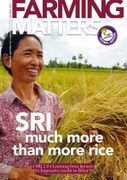AUTHOR
Month: March 2013
Articles
 SRI in Bihar: From one to 350,000
March 25th, 2013
SRI in Bihar: From one to 350,000
March 25th, 2013
Farmers in Bihar were initially sceptical when they heard about the System of Rice Intensification, five years ago. Only one farmer decided to try it. From then, first by word of mouth and now with government support, SRI has gone from strength to strength. In 2012, Bihar had some 335,000 hectares of SRI paddy and … Read more
 Learning takes various forms…
March 25th, 2013
Learning takes various forms…
March 25th, 2013
Last year, West Africa faced a devastating food crisis, triggered by insufficient and erratic rains. The underlying causes include a systematic depletion of the soils, worsened by climate change. Many families and communities have taken their fate into their own hands. In Burkina Faso, women’s groups supported by the local NGO Association Nourrir Sans Detruire … Read more
Globally connected: News from the AgriCultures Network
March 25th, 2013
Our partner organisations are widely known for the regional editions of this magazine, from AGRIDAPE to LEISA China. Yet there is much more going on, with many different initiatives for disseminating information and exchanging ideas and opinions. AME: From essays to apps In early 2013 the AME Foundation joined the smartphone era with the new … Read more
 SRI MUCH MORE THAN RICE
March 25th, 2013
SRI MUCH MORE THAN RICE
March 25th, 2013
Farming Matters | 29.1 |March 2013The story of the System of Rice Intensification (SRI) is an interesting one. It illustrates that relatively simple innovations can make a world of difference. It also shows that the transition to sustainable agriculture is a comprehensive social learning process involving many stakeholders– primarily farmers.This issue of Farming Matters publish articles about … Read more
New initiatives, Madagascar and Mali
March 25th, 2013
The System of Rice Intensification was originally developed in Madagascar from the 1960s onwards, with the practices being integrated in the 1980s. Its acceptance has been slow in its country of origin, however today, as in many other countries throughout the world, new initiatives are emerging. More people are promoting SRI, and more farmers are … Read more
 SCI: Planting with space
March 25th, 2013
SCI: Planting with space
March 25th, 2013
The use of finger millet seedlings has shown very positive results in the region of Tahtai Maichew, near Aksum, Ethiopia, as has the use has the use of alternative management practices for a number of other crops. The principles that make up a System of Crop Intensification are now spreading through the regions of Tigray … Read more
 Enhancing agrobiodiversity through SRI
March 25th, 2013
Enhancing agrobiodiversity through SRI
March 25th, 2013
A key goal of the joint Hivos/Oxfam Novib Knowledge Programme, Agrobiodiversity@knowledged, is to share knowledge and experience about farming practices from all over the world that use and enhance agricultural biodiversity. The System of Rice Intensification (SRI) is usually promoted as a successful approach for increasing productivity and decreasing costs. The Centre for Indian Knowledge … Read more
 Learning from farmers
March 25th, 2013
Learning from farmers
March 25th, 2013
It was an afternoon of 2002 when I first read about SRI. As an extension officer in the District Agriculture Development Office (DADO), I started promoting SRI in the following years in the district of Morang, Nepal. Over this time I observed hundreds of attractive SRI fields and spent some years as a SRI activist. … Read more
 “SRI is something unprecedented”
March 25th, 2013
“SRI is something unprecedented”
March 25th, 2013
Norman Uphoff, Professor Emeritus of Government and International Agriculture at Cornell University, served as director of the Cornell International Institute for Food, Agriculture, and Development (CIIFAD) from 1990 to 2005. During this time he became acquainted with the System of Rice Intensification (SRI) in Madagascar, and realised that “something unusual was going on” as farmers … Read more
 A visual guid to SRI
March 25th, 2013
A visual guid to SRI
March 25th, 2013
The World Bank Institute (WBI) developed the multimedia toolkit “Achieving more with less: A new way of rice cultivation” to illustrate knowledge and techniques on SRI. The toolkit was developed from an experience with SRI in the Philippines in 2007, where farmers piloted the approach within their specific socio-environmental conditions, with very encouraging results in … Read more
Month: March 2013
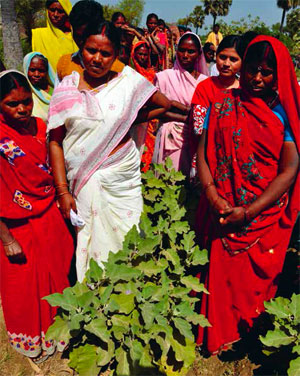 SRI in Bihar: From one to 350,000
SRI in Bihar: From one to 350,000
Farmers in Bihar were initially sceptical when they heard about the System of Rice Intensification, five years ago. Only one farmer decided to try it. From then, first by word of mouth and now with government support, SRI has gone from strength to strength. In 2012, Bihar had some 335,000 hectares of SRI paddy and … Read more
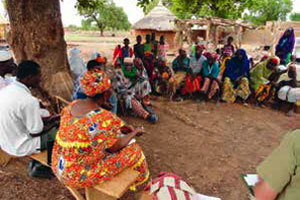 Learning takes various forms…
Learning takes various forms…
Last year, West Africa faced a devastating food crisis, triggered by insufficient and erratic rains. The underlying causes include a systematic depletion of the soils, worsened by climate change. Many families and communities have taken their fate into their own hands. In Burkina Faso, women’s groups supported by the local NGO Association Nourrir Sans Detruire … Read more
Our partner organisations are widely known for the regional editions of this magazine, from AGRIDAPE to LEISA China. Yet there is much more going on, with many different initiatives for disseminating information and exchanging ideas and opinions. AME: From essays to apps In early 2013 the AME Foundation joined the smartphone era with the new … Read more
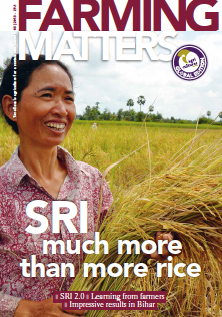 SRI MUCH MORE THAN RICE
SRI MUCH MORE THAN RICE
Farming Matters | 29.1 |March 2013The story of the System of Rice Intensification (SRI) is an interesting one. It illustrates that relatively simple innovations can make a world of difference. It also shows that the transition to sustainable agriculture is a comprehensive social learning process involving many stakeholders– primarily farmers.This issue of Farming Matters publish articles about … Read more
The System of Rice Intensification was originally developed in Madagascar from the 1960s onwards, with the practices being integrated in the 1980s. Its acceptance has been slow in its country of origin, however today, as in many other countries throughout the world, new initiatives are emerging. More people are promoting SRI, and more farmers are … Read more
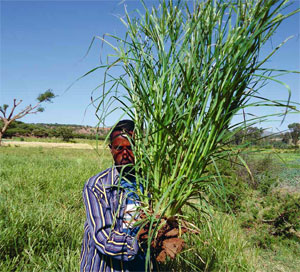 SCI: Planting with space
SCI: Planting with space
The use of finger millet seedlings has shown very positive results in the region of Tahtai Maichew, near Aksum, Ethiopia, as has the use has the use of alternative management practices for a number of other crops. The principles that make up a System of Crop Intensification are now spreading through the regions of Tigray … Read more
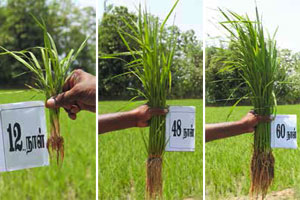 Enhancing agrobiodiversity through SRI
Enhancing agrobiodiversity through SRI
A key goal of the joint Hivos/Oxfam Novib Knowledge Programme, Agrobiodiversity@knowledged, is to share knowledge and experience about farming practices from all over the world that use and enhance agricultural biodiversity. The System of Rice Intensification (SRI) is usually promoted as a successful approach for increasing productivity and decreasing costs. The Centre for Indian Knowledge … Read more
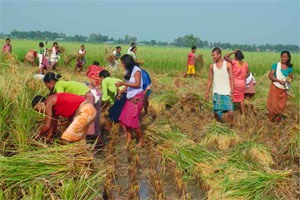 Learning from farmers
Learning from farmers
It was an afternoon of 2002 when I first read about SRI. As an extension officer in the District Agriculture Development Office (DADO), I started promoting SRI in the following years in the district of Morang, Nepal. Over this time I observed hundreds of attractive SRI fields and spent some years as a SRI activist. … Read more
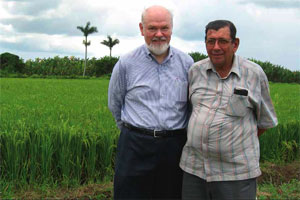 “SRI is something unprecedented”
“SRI is something unprecedented”
Norman Uphoff, Professor Emeritus of Government and International Agriculture at Cornell University, served as director of the Cornell International Institute for Food, Agriculture, and Development (CIIFAD) from 1990 to 2005. During this time he became acquainted with the System of Rice Intensification (SRI) in Madagascar, and realised that “something unusual was going on” as farmers … Read more
 A visual guid to SRI
A visual guid to SRI
The World Bank Institute (WBI) developed the multimedia toolkit “Achieving more with less: A new way of rice cultivation” to illustrate knowledge and techniques on SRI. The toolkit was developed from an experience with SRI in the Philippines in 2007, where farmers piloted the approach within their specific socio-environmental conditions, with very encouraging results in … Read more

